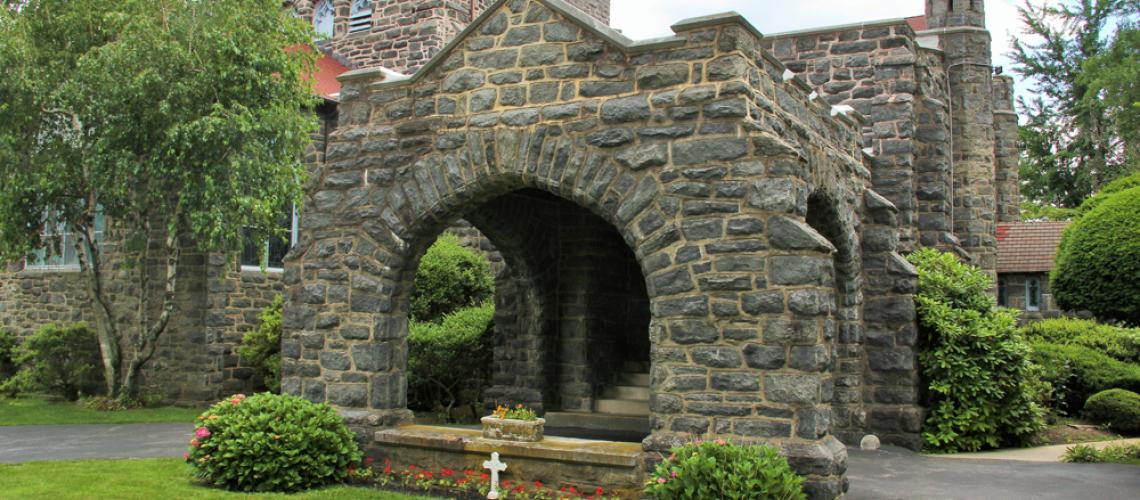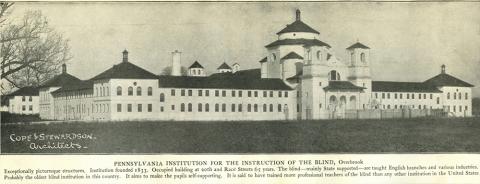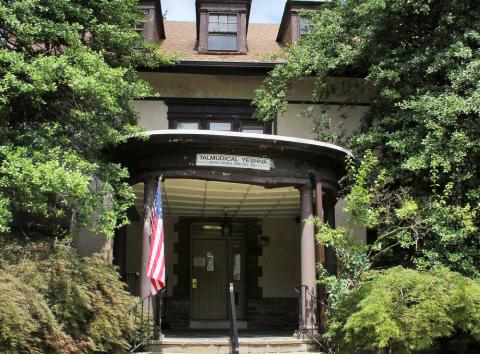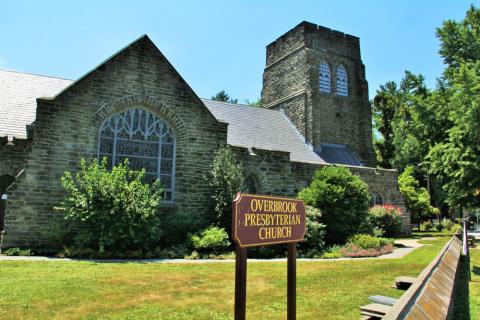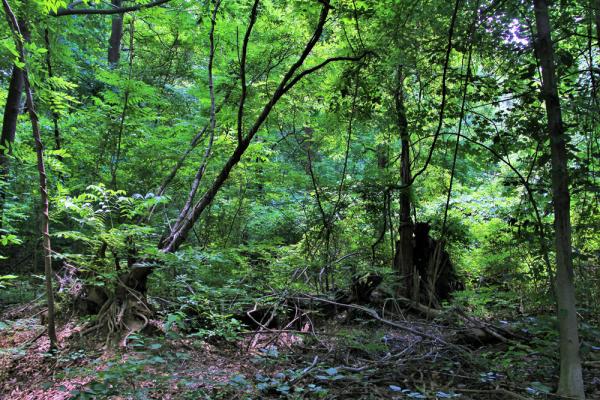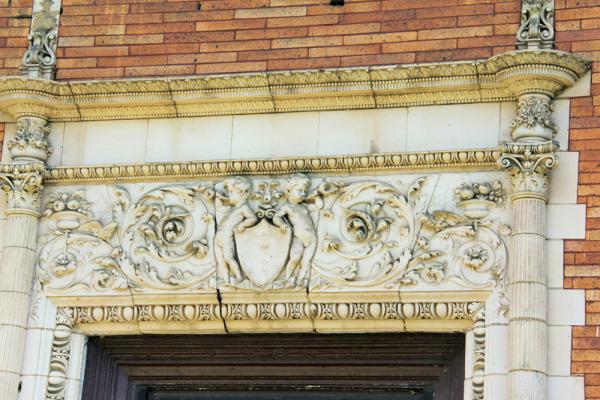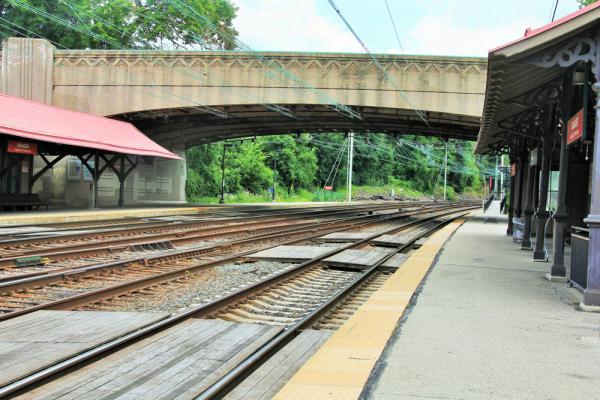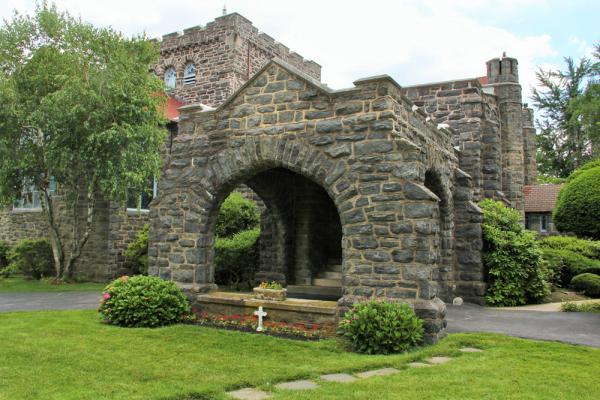Institutions in Overbrook
Part of
Throughout the late 19th century and early 20th century, houses of worship and benevolent/charitable institutions played a role in the Overbrook section.
Throughout the late 19th century and early 20thcentury, houses of worship and benevolent/charitable institutions played a role in the Overbrook section. These included the Overbrook Presbyterian Church, Our Lady of Lourdes, the Memorial Church of St. Paul (later the African Episcopal Church of St. Thomas), and the Talmudical Yeshiva of Philadelphia
Houses of Worship
In 1890, Presbyterians, assisted by the Quaker Wistar Morris, built the Gothic Revival-style Overbrook Presbyterian Church at the intersection of Lancaster Park and City Line Avenue, soon to be part of Overbrook Farms. This church was expanded in 1909 and rebuilt in 1925.
In 1899 Catholics built Our Lady of Lourdes in Overbrook Farms—a granite-and-limestone Gothic-Revival church, located at the intersection of Lancaster Avenue and 63rd Street.
In 1899, White Episcopalians built the Memorial Church of St. Paul in Overbrook Farms on Lancaster Avenue between Overbrook Avenue and Sherwood Road—an English Gothic-style church constructed of Wissahickon schist, featuring Tiffany and d’Ascenzo stained-glass windows. Decades later the Church of St. Paul was sold to become the home of the African Episcopal Church of St. Thomas, an institution that was founded in 1792; a chapel was added in honor of the founder, Absalom Jones.[1]
In 1953, Talmudical Yesihva of Philadelphia, an all-male orthodox yeshiva, was founded. Located on Drexel Road between City Line Avenue and Upland Way, a short walk from Overbrook Station, the yeshiva offers a college-preparatory curriculum for approximately 100 high school students and a curriculum for a select group of college-age students, with all levels emphasizing Talmudic studies.[2]
Charitable Institutions
Pennsylvania Institution for the Instruction of the Blind
In 1832, a German immigrant, Julius Friedlander, with the help of prominent Philadelphians J. Francis Fisher and Robert Vaux, established the Pennsylvania Institution for the Instruction of the Blind in 1832 (renamed the Overbrook School for the Blind in 1946). The Institution’s early board of directors included such luminaries as Bishop William White, Dr. Phillip Syng Physick (“father of American surgery”), and Alexander Dallas Bache (University of Pennsylvania professor and first president of Girard College). The Institution’s new building, at 20th and Race streets, was dedicated in 1836. This building, and the Institution’s early operations, were underwritten by the estate of William Young Birch.[3]
In 1896, its original building showing signs of deterioration, the Institution purchased 26.3 acres from the Morris Estate in Overbrook for new buildings on a green-space campus at 6333 Malvern Avenue. “The site offered proximity to the Overbrook station of the Pennsylvania Railroad and accessibility to streetcar lines,” writes Edith Willoughby, the school’s archivist. “The former farm was surrounded by green open space, perfect for promoting health.” The Institution opened its splendid new campus in 1899, its dominant feature being an expansive, Spanish Renaissance-style central building architected by the firm of Cope and Stewardson. Crowned by a rotunda, this building included boys’ and girls’ interior cloisters, a library, facilities for support services, and a pool and interior playgrounds. Ten acres of adjoining athletic fields rounded out the campus.[4]
Orphan Society of Philadelphia
Walter S. Bromley’s 1892 map of the 27th and 34th Wards shows the Orphan Society of Philadelphia located on a tract that extended from Lebanon Avenue to Lansdowne between 64th and 68th streets. This was one of four successive locations over a 150-year period for the orphanage established by the Orphan Society of Philadelphia in 1815. According to the Historical Society of Pennsylvania: “The institution, while nonsectarian, was Christian-based in philosophy and teaching. For at least the first one hundred years, admission was restricted to ‘destitute fatherless children of married parents.’ Boys were not admitted over the age of seven and were housed until the age of sixteen; girls were not admitted over the age of nine and were housed until the age of eighteen.”[5]
